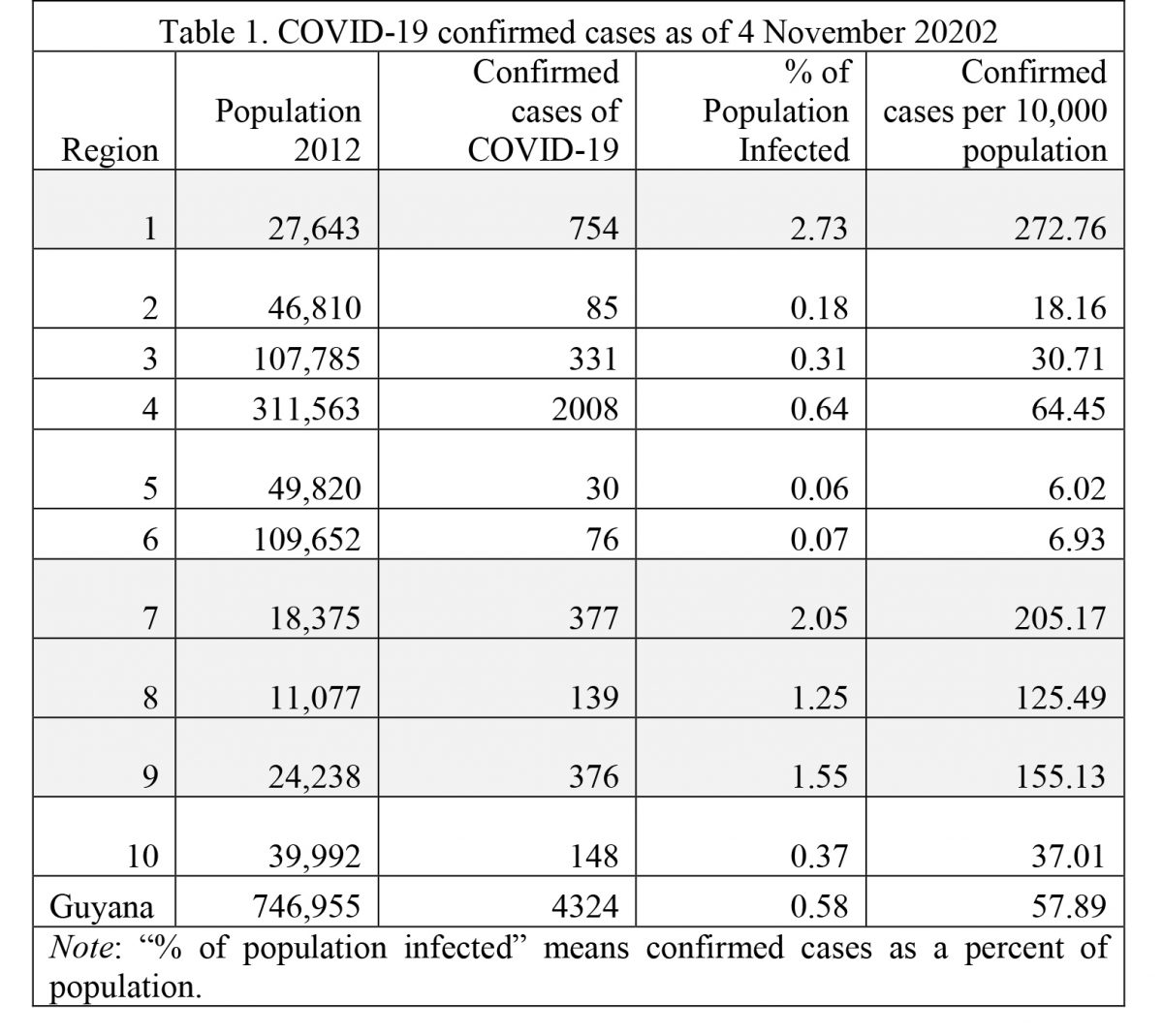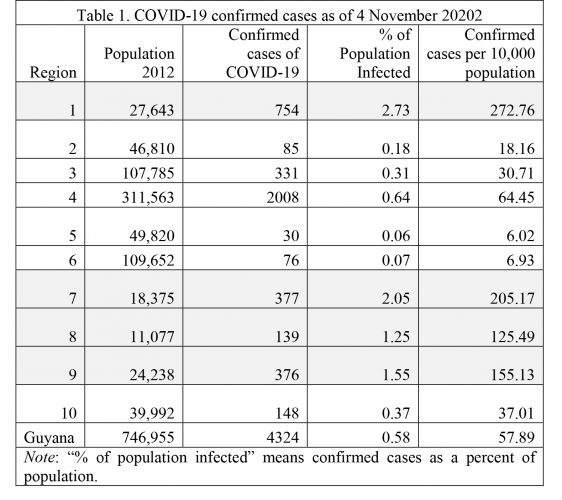Dear Editor,
Thank you very much for providing the public with the daily dose of COVID-19 data. I do recognize you can only publish data to which you have access. Unfortunately, these daily doses of COVID-19 data, while not useless, are an annoyance. They annoy because they provide no basis for a deeper diagnostic, assessment and inference. As of yesterday (4 November), 20,739 persons have been tested for COVID-19, which suggests that around 2.8 of the population has been tested, assuming one test per person which is probably not a realistic assumption. I shall not comment on the quality of the testing.
Of those who have been tested, 4,324 have tested positive. This amounts to a positivity rate of 20.8 percent, which is very high and suggests that COVID-19 is very prevalent in Guyana. In fact, the positivity rate is probably higher, but this can only be confirmed by more widespread and stratified testing.
Apparently, seventy-nine “new cases” have been identified yesterday but we do not know how many persons were tested yesterday or the regional distribution of those tested and of the new cases found. Thus far, 130 people have died of COVID-19. This works out to around 3.0 of the confirmed cases, a rather high figure.
In the rest of this letter, I attempt to look at these data points in relation to the country’s population. Given the paucity of population data, I assume that the country’s population is around 750,000, which is not far from what the Bank of Guyana Annual Report shows for 2018 (745,000). According to the 2012, census, there were approximately 747,000 persons living in the country in 2012. The relative stability of the population from 2012 to 2020 does not suggest drastic changes in distribution across the ten administrative regions. For this reason, I assume that the regional distribution of the population in 2020 is unchanged from that of 2012.
Based on these assumptions, Region 1 has highest percentage of confirmed cases (2.73 percent of its population) and Region 5 the smallest (0.06 percent of its population). For Guyana as a whole, confirmed cases amounted to 0.58 percent of its population. Only regions 1, 7, 8 and 9 have confirmed cases in excess of 1 percent of their population. Note that all four regions are hinterland regions, which suggest that the disease is more prevalent in the interior areas of this country. This much is known.
In terms of a more revealing metric, there are 272.76 cases per 10,000 population in Region 1. No other region has a higher rate infection. But once again, confirmed cases per 10,000 population exceed 100 in the four hinterland regions (see accompanying table). Because deaths by region are not available, a similar analysis cannot be carried out. This means that the regional death rates (deaths as a percent of confirmed regional cases or regional population) are unknown.
Both metrics indicate that Regions 5 and 6 have the least confirmed cases as a percent of their total population or per 10,000 population. These two regions may be the safest places in Guyana, assuming the confirmed cases is an accurate reflection of the prevalence of the disease.
I plead with the authorities to provide more useful data: by ethnicity, age group and region.
Yours faithfully,
Ramesh Gampat







